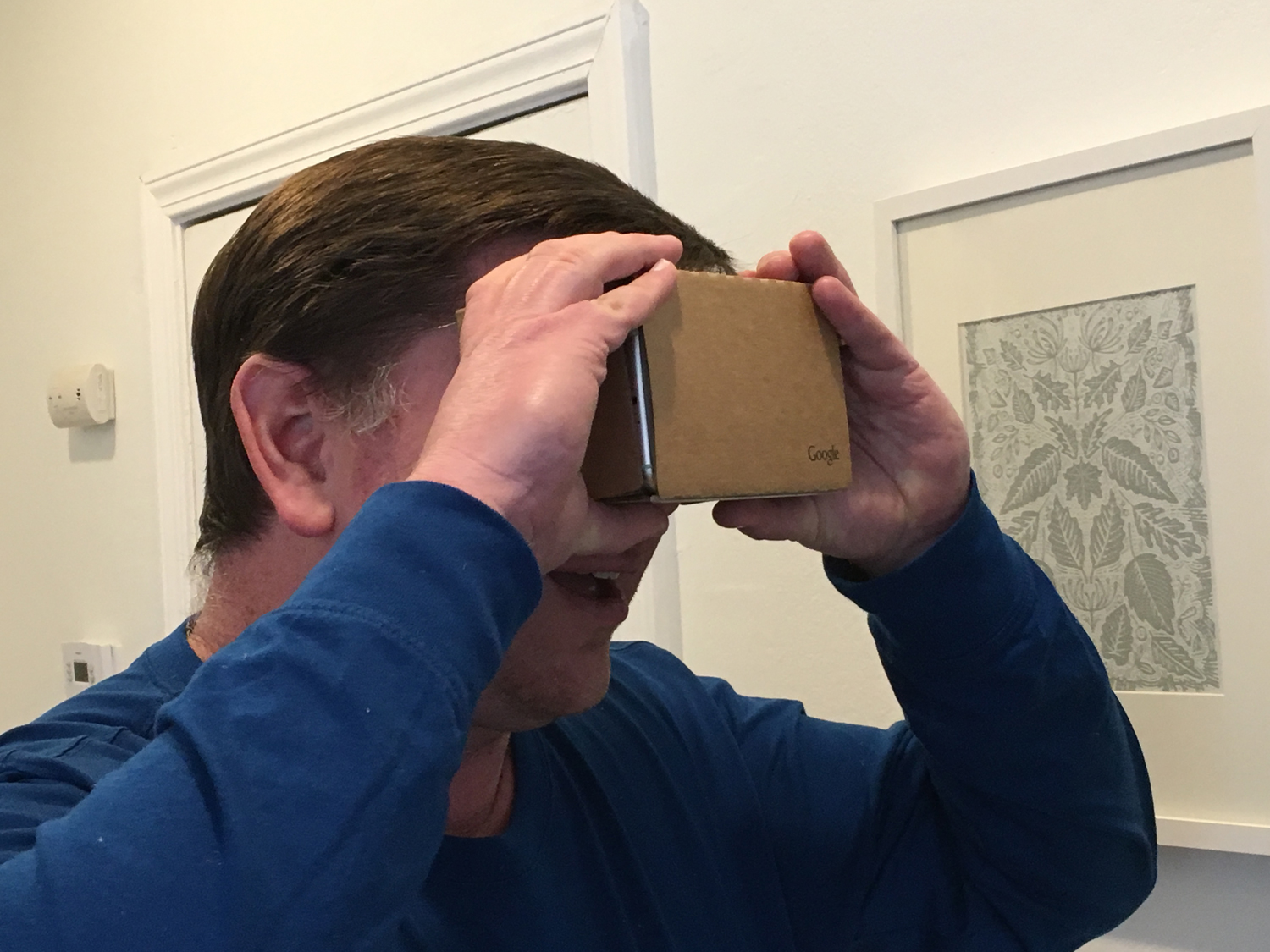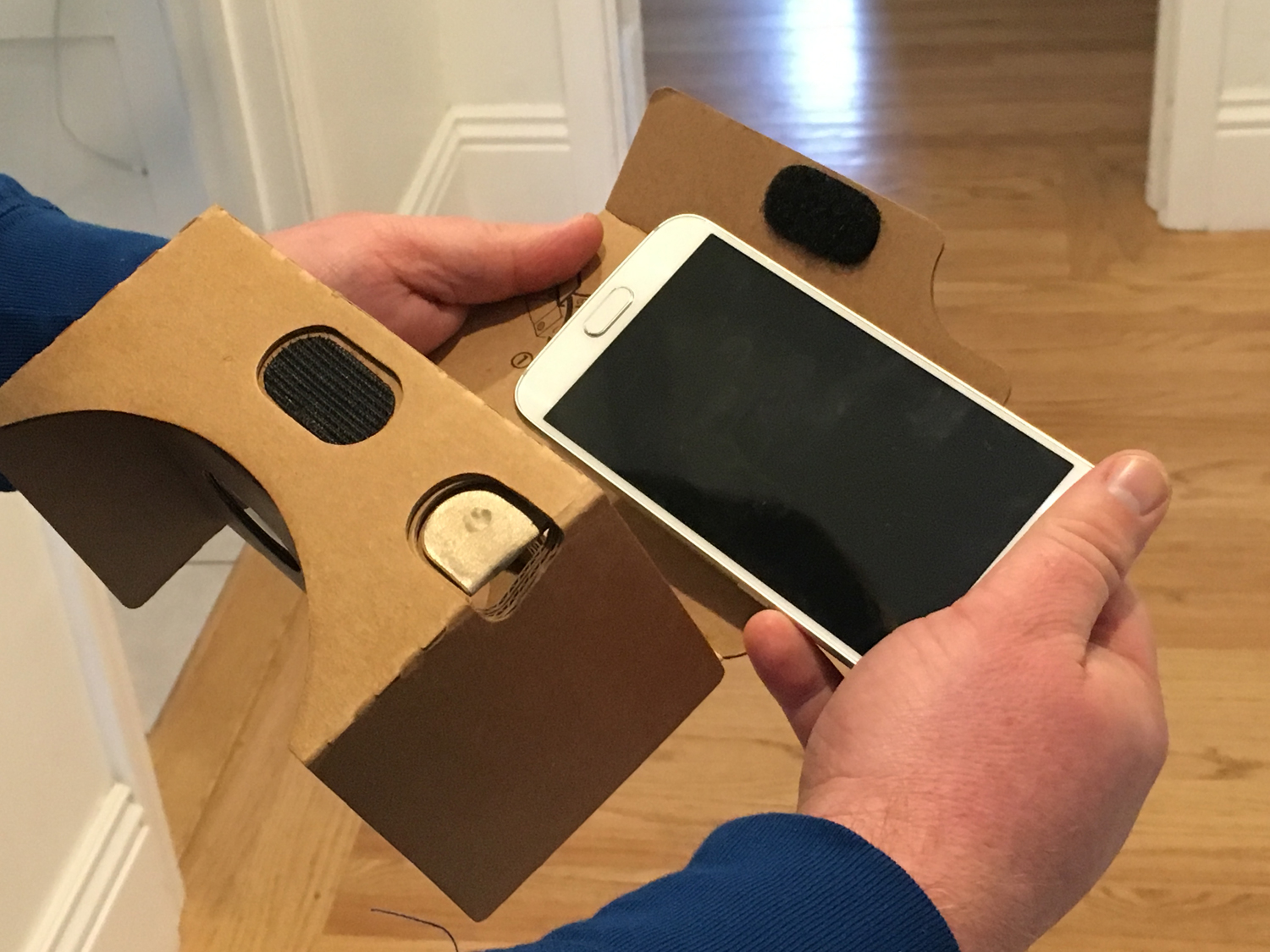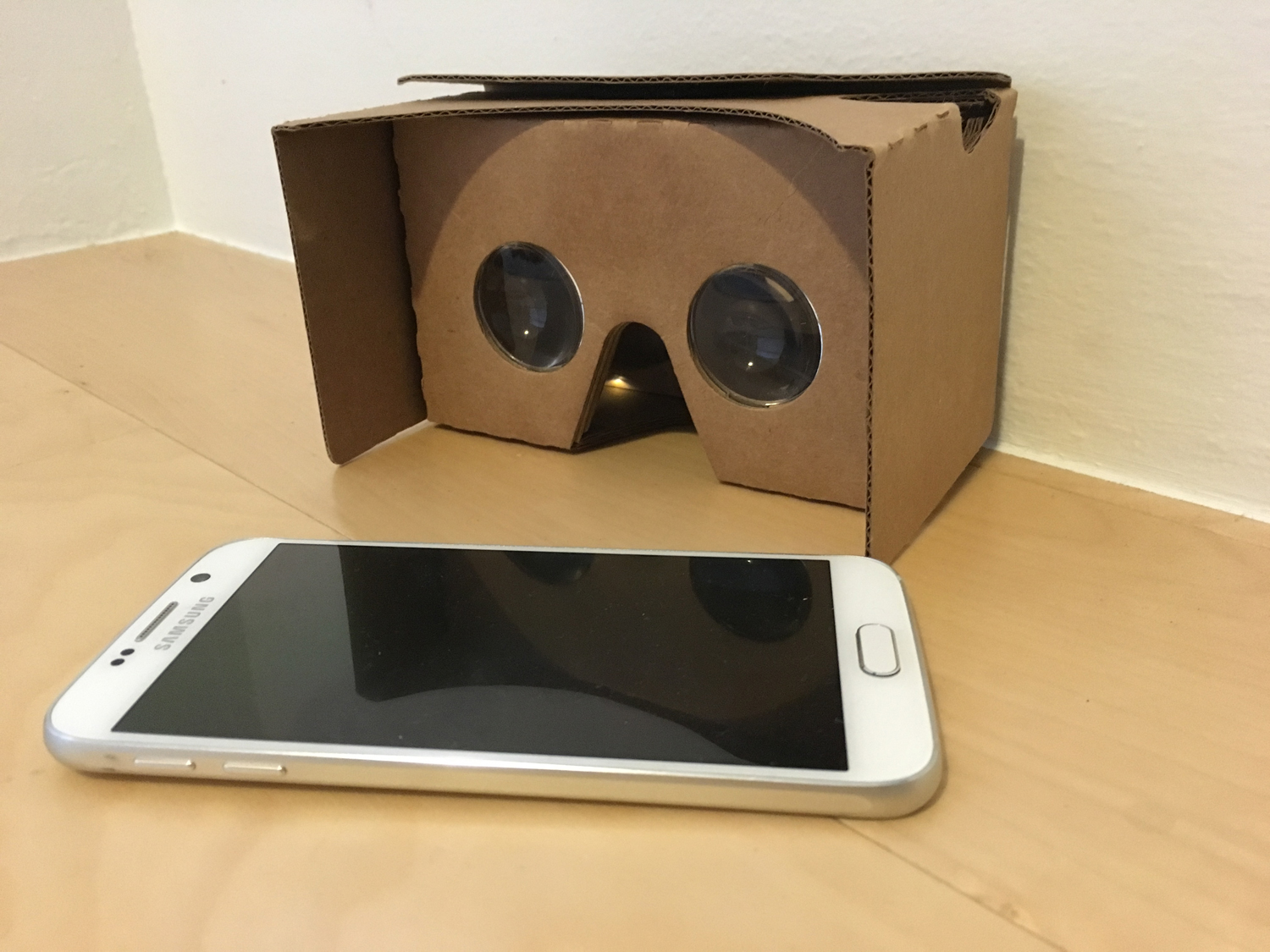Google Cardboard FAQ: Everything You Need to Know
Google's Cardboard headset gives you a low-cost way to experience virtual reality. Here's a look at how Cardboard works and what you can do with it.
As cool-looking as virtual reality headsets from the likes Oculus, HTC, Samsung and Sony may be, you don't necessarily need state-of-the-art hardware to experience an immersive VR world. To see computer-generated imagery pop up all around you, all you need is the smartphone that's likely already in your pocket, plus a little bit of cardboard.

Specifically, you need Google Cardboard, an easy-to-assemble viewer that, when paired with a compatible smartphone, lets you experience a virtual world as if you were there. When you turn your head or move it up and down, the imagery moves with you, simulating the same experience as you would normally have looking around.
MORE: Best Google Cardboard Apps
Here's a quick rundown of what you need to know about Google Cardboard and how to use the headset to experience virtual reality on the cheap.
What is Google Cardboard?
Google Cardboard is a VR headset made out of cardboard — a Do It Yourself (DIY) headset that enables you to see images stereoscopically (in 3D). When you turn your head or move up and down, the image turns and moves up and down with you, simulating the experience of using a VR environment.
How Does Google Cardboard Do All That?
Inside the mount is a place to insert your smartphone, along with two optical lenses. You rest Google Cardboard on your face like a pair of eyeglasses or goggles (or, if you of a certain age, a View-Master toy). Looking through Google Cardboard, you'll see a pair of images on your smartphone screen. The optical lenses in Google Cardboard help to make that a stereoscopic image. The wearable Google Cardboard device pairs with software for your smartphone, which you can download from Google Play and the App Store, depending on which phone you use.

Google continues to tweak the Cardboard experience, adding improvements that should make things even more immersive. Most recently, the Software Development Kit (SDK) for Google Cardboard added support for positional audio, which provides realistic 3D sound effects — basically sounds play from different directions so that you hear them in the virtual world just like you would in the real one. The effect, Google says, is a more realistic 3D soundscape.
Which Smartphones Support Google Cardboard?
Both Android and iOS devices work, thanks to the Application Programming Interface (API) Google developed and released to developers. That's allowed a growing number of apps to come out that work on both platforms.
Originally, Google Cardboard was designed to support 4.7- and 5-inch phones like the Samsung Galaxy S5 or iPhone 6. Cardboard 2.0, released last year, can support larger 5.5 and 6-inch phones like the iPhone 6S Plus and the Samsung Note 5.

If you're using an Android-based smartphone, you can download the Google Cardboard app itself from Google Play. iPhone users can download the Google Cardboard app from the iOS App Store. Other apps support the Google Cardboard API as well, so just search for "Google Cardboard" in your app store of choice to find compatible apps.
How Can I Get Google Cardboard?
If you consider yourself a maker and you're looking for a fun project, you can build your own by downloading instructions from Google's website. You'll need some parts, including cardboard, lenses, magnets, velcro and a rubber band; Google's site lists what you'll need and where you can buy them.
If that sounds like too much work, there are plenty of companies that make Google Cardboard headsets. You'll find kits sold online anywhere from Amazon to Google's own site.
How Much Does Google Cardboard Cost?
Prices start at less than $10. A number of Google Cardboard viewers run from $20 to $40, with more expensive viewers available with additional features and functionality. Shop around for the version best suited for your phone and your pocketbook.
How Hard Is Google Cardboard to Put Together?
Based on our hands-on, Google Cardboard is remarkably easy to assemble. Cardboard kits typically arrive as flat packs that you put together yourself. You'll find printed instructions on the folds, letting you bend the Cardboard headset into place without much fuss. The downloadable companion app developed by Google also includes instructions aimed at helping you understand how to use Cardboard with your phone.
What Apps Work With Google Cardboard?
More and more every day! Google has released the programming tools needed to support Google Cardboard for both Android and iOS, and it's up to third-party developers to support the emerging technology. The good news is that many have, with more on the way.
You can find games, cinematic applications, VR videos and viewers, Augmented Reality (AR) apps that overlay real-world scenery with information and content, news apps, and more. For a roundup of some of the best, check our roundup of the top Google Cardboard Apps.
How Does Google Cardboard Compare to Other VR Headsets?
On price, Google Cardboard is hard to beat. And unlike many VR headsets with releases planned for later in the year, you can get Google Cardboard right now. Samsung's Oculus-powered Gear VR accessory is out now and costs $99, but it only works with select Samsung phones.
As for other headsets, the Oculus Rift isn't yet available, and even when it is, it will cost $599 (and require a PC with some pretty hefty specs of its own). HTC hasn't announced the price of its Vive VR headset yet, but it may cost even more. (Preorders begin at the end of February.) Sony's PlayStation VR should launch mid-year, and will also run you hundreds of dollars.
Your tradeoff for Google Cardboard's dramatically lower price is that the apps are, by and large, more technology demos than full-fledged apps. That will change with time, as developers learn how to use the technology, as the technology improves and as a larger number of people use it.
In the interim, if you want to give VR a try but don't want to make a huge capital investment to do it, Google Cardboard is a solid way to get started.
Sign up to get the BEST of Tom's Guide direct to your inbox.
Get instant access to breaking news, the hottest reviews, great deals and helpful tips.
